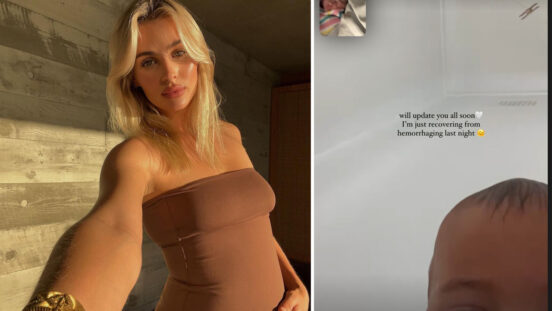10 things pregnant women need to know about labour, childbirth, c-sections and post-birth recovery
Expecting a bub? Read this first.
By Dr. Kate Kerridge & Midwife Lyn Ratcliff, For Women
You’ve spent nine months growing your bub and now, your due date is looming closer. Childbirth, whether vaginally or via a c-section, is incredible but also painful.
For your delivery day, knowledge is power. Here’s 10 things expectant mums should know when preparing for childbirth.
Support belts and shorts
While not essential, these garments do provide the support necessary to reduce pelvic and back pain associated with advancing pregnancy. To be effective, they should be properly fitted by the retailer or a physiotherapist. A post birth version is also available and can be used for both vaginal and caesarean births.
It’s normal for your baby to be ‘overdue’
Your due date is an educated guess of when your baby may arrive. Term gestation is considered to be any time after 37 weeks and extends beyond the due date of 40 weeks. In an uncomplicated, low risk pregnancy it is acceptable practice to allow some time after your due date for labour to begin.
Vaginal bleeding after the birth
After you have birthed your baby, the placenta also needs to leave your body and usually passes through your vagina within half an hour after the birth. If you’ve had a caesarean, the placenta will be removed through the same incision. Vaginal bleeding results from the placental site healing and may take up to six weeks to stop completely.
Your vagina will look and feel different after a vaginal birth
Subtle cosmetic and functional changes to your vagina do occur even in a completely normal uncomplicated birth. Some women are not prepared for this and suffer distress at this realisation even fearing that something has gone wrong.

The placenta will usually pass through your body within about 30 minutes after childbirth.
Pain Relief Options in Labour
There are a range of pain relief options available for women including nitrous oxide, morphine and epidural anaesthesia. There are pros and cons for each option, with varying effects of pain relief. Expectant mums can talk to their healthcare professional to discover the best option for them.
Avoiding Unnecessary Intervention
Medical intervention will sometimes be required in childbirth but should only occur when absolutely necessary. It is important women have all the information available to make an informed decision when the time comes.
When is an episiotomy needed
An episiotomy is a procedure whereby local anaesthetic is injected into the perineum (the area between your vaginal opening and your anus) and your vaginal tissue. Once numb, a cut is made to widen the opening and assist the birth. Episiotomies were once common practice, however, are not routinely performed anymore and only performed in extreme circumstances. To help ease some of the discomfort after giving birth, you can get cool and warm inserts to pop into your undies.
Maternal Assisted Caesarean Section
For birthing’s conducted through a caesarean, your obstetrician will assist until your baby’s head is out. At this point, you have the opportunity to reach down and guide your newborn out completely.

In a maternal assisted casesarean, you have the opportunity to reach down and help guide your baby out.
How to care for your wound after caesarean section
Most women are concerned about caring for the wound and how the scar will look afterwards. It’s important to discuss your options for wound closure and the type of dressing that will be used with your healthcare provider they will result in different outcomes.
Stitches are the most common and recognised closure option, however, may need removal and may not completely seal the wound from bacteria. Staples are a more rigid option allowing the obstetrician to close the wound quicker and provides added strength when compared to stitches. Wearable glue dressings are another option that may make self-care easier and help minimise the risk of infection by sealing the wound. These types of dressings don’t need changing and are waterproof, so if directed by your healthcare professional you may be able to shower.
It’s common to experience some discomfort after having a c-section and specially designed postpartum undies can help support the tummy area as a whole and also have a bespoke pocket in which to place a cool or warm insert that may help soothe the pain.
Bonding with your baby
Bonding begins at conception, is strengthened during the pregnancy and culminates with you meeting each other at the birth, regardless of the circumstances. Feeling disappointed with your birth experience or how you birthed your baby should not be confused with feeling that you’re not bonding with the baby. You will need time to process your emotions, but you’ll soon see that it doesn’t matter to your baby how they were birthed, just that you’re their mum!
Dr. Kate Kerridge and Midwife Lyn Ratcliff are working in partnership with Ethicon Australia, empowering women to have a conversation with their health care professional on their caesarean options.




